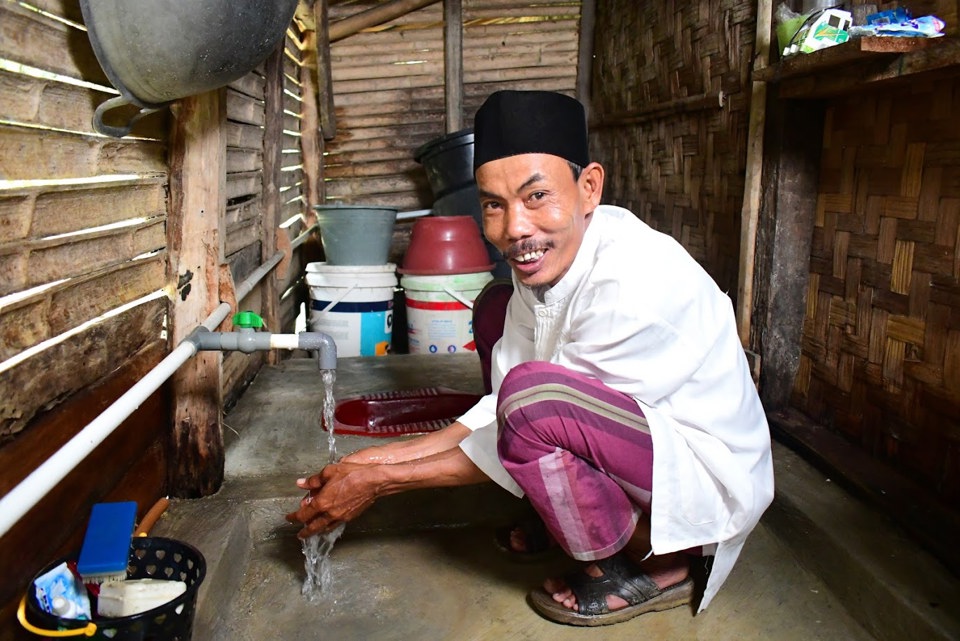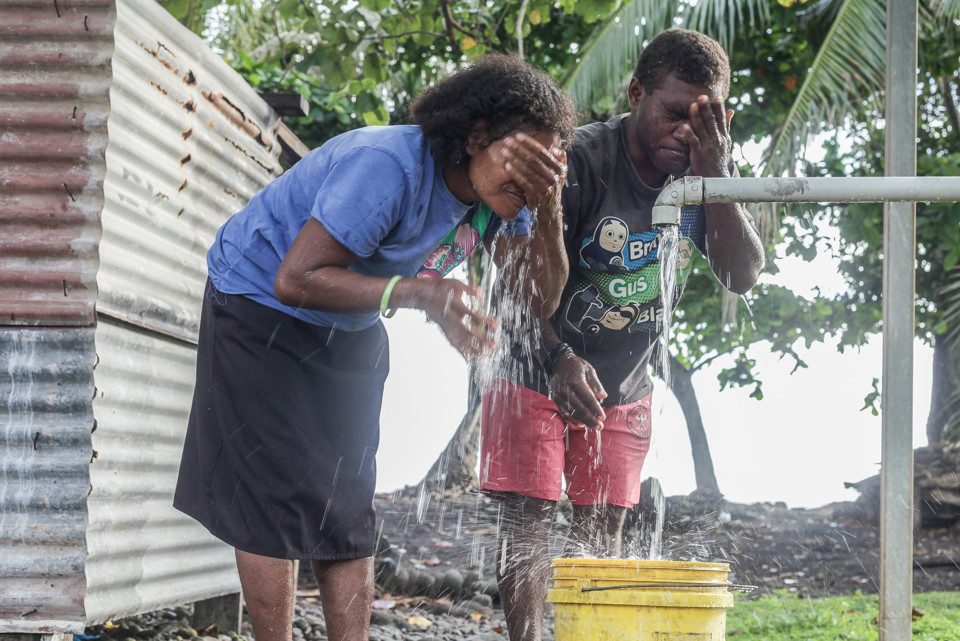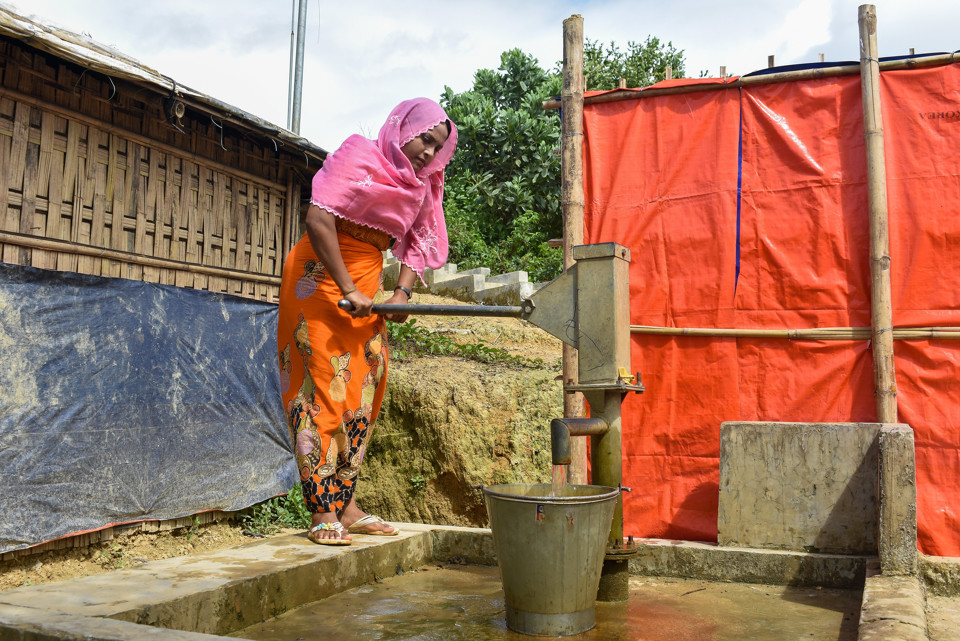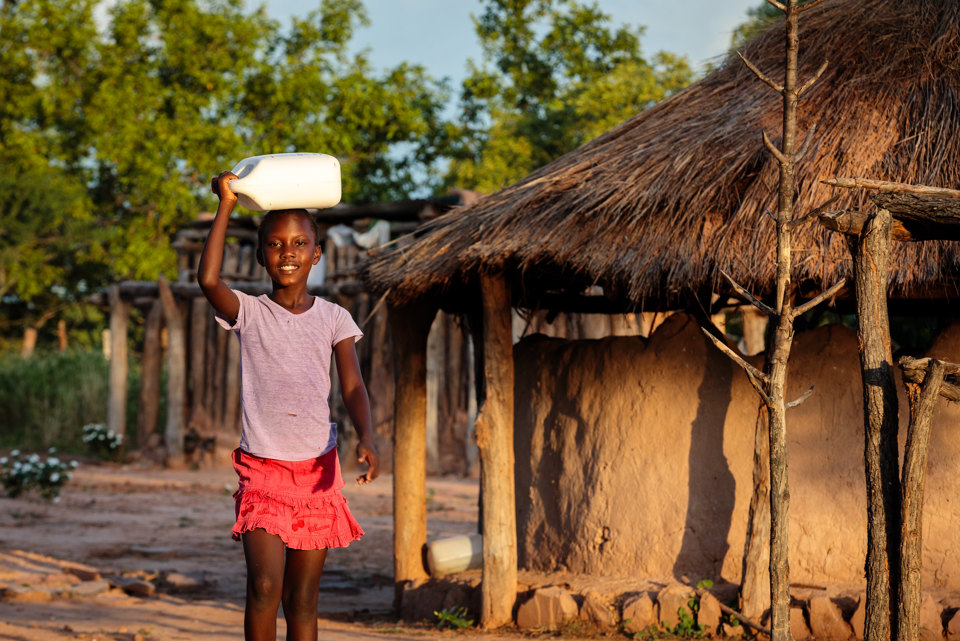Global Issues
Global water scarcity and solutions for the water crisis
Learn more about the issue of water scarcity and its contribution to global poverty

Thandolwayo (9) from Tanzania washes her face from the new water pipe, installed in her village with the support of Caritas Australia. Before the pipe was installed, Thandolwayo and other members of the community had to walk over 5km one way at least once a day down a steep and dangerous hill to collect dirty water from the Gweyi river. She would often get sick and miss school from illness and being tired from collecting water. Photo credit: Richard Wainwright/Caritas Australia.
Water is one of the world’s most valuable and abundant resources. Yet, water scarcity exists in many countries and is a growing threat to millions of people around the world.
Water scarcity arises when the demand for clean and safe water outweighs the supply. And as global populations steadily increase, so too does the need for more water. Around the world, over 2.2 billion people do not have access to safe drinking water while over 40% of the world’s population is affected by water scarcity.
Water Facts
4.2 billion
people are living without adequate sanitation facilities
1 in 3
schools lack access to water and basic sanitation
80%
of water-deprived households involve women and girls carrying the burden of water collection
200 million
hours are collectively spent by women around the world, collecting water
What is water scarcity?
The United Nations defines water scarcity as “The capacity of a population to safeguard sustainable access to adequate quantities of acceptable quality water for sustaining livelihoods, human wellbeing, and socio-economic development, for ensuring protection against water-borne pollution and water-related disasters, and for preserving ecosystems in a climate of peace and political stability.”
Without reliable sources of water and water management systems to support them, rural and remote communities, the work of farmers, hospitals, schools, and other essential community development services come to a grinding halt. The search for water has a significant impact on the lives of vulnerable families, with hours taken each day to travel to a clean water source. It can hinder the education of children and young people, limiting employment opportunities and pushing them further into poverty.
What causes water scarcity?
There are a range of circumstances and events that can cause or contribute to water scarcity. These include:
- Arid conditions which can be worsened by the effects of a changing climate
- Population growth
- Underdeveloped or non-existent water infrastructure and management systems
- Deforestation and removal of natural vegetation
- Wasting and/or misusing available water resources
Combined, these factors are causing a global water crisis that is adversely impacting the health and development of men, women and children in the world’s most vulnerable communities. Globally, around 785 million people lack access to safe and clean drinking water.
Water, hygiene and sanitation
Safe drinking water, sanitation and hygiene are crucial to human health and wellbeing, according to the World Health Organisation.
However, an estimated 4.2 billion people are living without adequate sanitation facilities.
Without safe water, maintaining hygiene and sanitation practices, health and wellbeing is almost impossible.
Contaminated water and poor sanitation are linked to the spread of preventable diseases such as cholera, diarrhoea, dysentery, hepatitis A and typhoid. (WHO)
When water comes from improved and more accessible sources, people spend less time on sometimes dangerous, risky journeys to collect it.

Arsad from Indonesia did not have a toilet or running water in his house until 2019 and had to walk a long distance to Open Defecation (OD) areas such as the forest or under trees, sometimes accompanying his wife at night, with the threat of snakes along the way. OD caused poor health, a dirty neighbourhood and family and community fights. Caritas Australia local partner Laz Harfa ran a Community Led Total Sanitation (CLTS) program is his community and through this he became a trusted community leader and hygiene advocate. Photo credit: Richard Wainwright/Caritas Australia.

Margret (left) at the San Isidro Care Centre in Guadalcanal province, Solomon Islands, October 2020. Due to drought, the school faced water shortages for about half the year with staff and students walking off campus, twice a day, to collect water. With Caritas Australia’s support, Margret’s school was able to install eight large water tanks, and a rainwater harvesting system, enabling the school to catch and store sufficient drinking water to supply students and staff throughout the entire year. It also allowed them to expand their vegetable and poultry production increasing their food security. Photo credit: Neil Nuia/Caritas Australia.
The effects of water scarcity on health, education and equality
Water and sanitation have a significant impact on the functioning of institutions, like healthcare facilities and hospitals that contribute to a community's overall health and development. For instance, without proper WASH facilities, healthcare facilities lack the necessary sanitary conditions to effectively treat their patients and are often overwhelmed by high numbers of people suffering from waterborne diseases.
At least 1 in 3 schools lack access to water and basic sanitation. Without these basic facilities, children are often forced to miss out on classes or even drop out of school, with the search for water a time-consuming part of their daily lives.
Water crisis solutions
Though usable water sources like rivers, lakes and aquifers can replenish naturally over time, the constant demand leaves millions struggling with water shortages. Southeast Asia and Africa are home to some of the nations that are most affected by water shortages.
Most of the communities that are affected in these regions rely on agriculture as a source of livelihood and income. However, there are solutions to the global water crisis, including:
- Enabling the construction and facilitation of efficient water infrastructure
- Creating awareness on the restoration and conservation of water ecosystems
- Training people in sustainable farming methods and efficient water usage
- Regulated use of water in highly industrialised zones
How are we tackling the water crisis
We recognise that access to WASH is a human right and that it is crucial to the overall development of a community – especially one that is vulnerable to poverty.
WASH activities are an integral part of our community development programs. We work closely with communities to raise awareness and improve infrastructure relating to water, hygiene and sanitation.
Our WASH programs include:
- Drilling boreholes and supporting communities to install water pumps so that they have access to clean water.
- Developing alternative safe water sources, such as ring wells and deep tube wells, rainwater harvesting tanks and sand filter systems.
- Building covered toilets, pot racks and sanitation facilities, such as simple Tippy Taps for hygienic hand washing.
- Providing education on improved hygiene practices.
- Supporting training on food production and agriculture, including introducing systems which use minimum quantities of water.

Halima pumps fresh water near her shelter in a Rohingya refugee camp in Cox’s Bazaar region of Bangladesh in August 2020. Photo credit: Inmanuel Chayan Biswas/Caritas Bangladesh.

Thandolwayo (9) outside her home holding a 5 litre water container she uses to collect water in Msuna Hills, Zimbabwe. In June 2017, Caritas Hwange, a Caritas Australia partner, installed a solar powered piped water system in Msuna Hills bringing fresh clean drinking water to the population for the first time. Photo credit: Richard Wainwright/Caritas Australia.
How water changes lives
In Zimbabwe, 12-year-old Thandolwayo dreamed of finishing her education and becoming a nurse. However, due to water scarcity she would walk seven kilometres each day, risking attacks from crocodiles, to collect contaminated water for her family. Our program helped her community to gain reliable access to clean water and put Thandolwayo back on the path to realising her dream.












